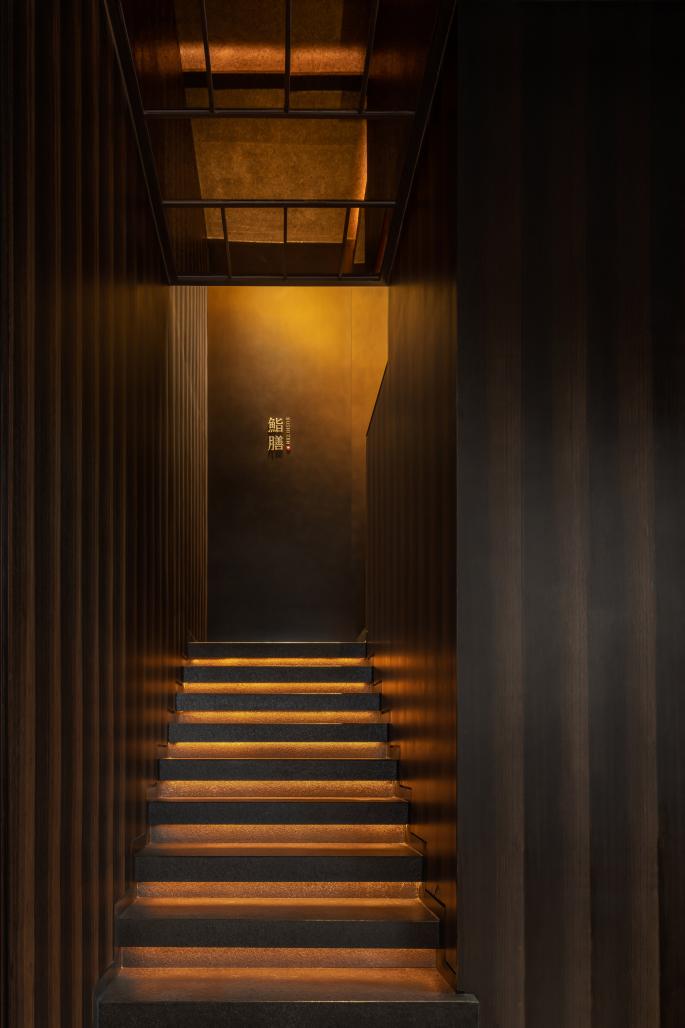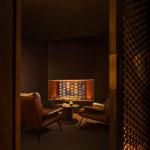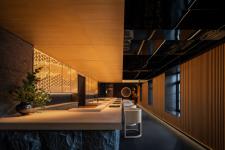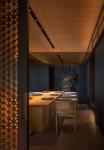LDH High-end Japanese Restaurant: SUSHI ZEN • Beijing
Located at No. 33 Wusi Street, Dongcheng District, Beijing, the Japanese banquet restaurant was renovated from a 200-year-old building set up in the Republic of China and provides Japanese banquets with a history of 200 years, facing the Forbidden City, a 600-year-old imperial palace.
As its designer, LIU Daohua mainly highlighted the oriental aesthetics and integrated the eastern and western cultures in the spatial design of the restaurant. Guests can feel certain culture and tradition from every dish they enjoy at every moment when they stay at the restaurant.
Cloud Café, on the first floor of the building, spread a life atmosphere for SUSHI ZEN on the second floor." People can experience a fused cultural and artistic conception."
Behind the doors and windows with diamond-shaped lattices is a cavernous cigar room with brick grating sills and a lighting fireplace. The welcoming counter, on the second floor, was created with natural marble with firelight lines, and looks like a fire providing a warm and tipsy feeling.
Welcoming Counter
The paper window-shaped low-light molding, the stone-like rough wall, the wabi-sabi bryophytes in the corner, and a small flowing "mountain stream" complement each other. Guests feel as if they arrive at a mountain temple after climbing.
Food, Tableware, And Artistic Conception
All the moldings and moving lines converge together in front of the table in the center of the space. There is a large cypress table, round chairs, cloth curtains, and shadow windows here. Suzuki Ohki, who was titled Asia's Top 10 Chef in 2017, cooks delicacies here.
Central Dining Area
With special tools, the chef sculpts precious and cooks ingredients which are transported across the mountain and sea into seasonable delicacies suitable for spring, summer, autumn, or winter. Guests can enjoy delicate delicacies quietly in such a ceremonial area.
The black steel and the mirror reflect each other and bring an infinite sense of spatial extension. The interspersed dark and light colors add more visual layers and create a warm sense of balance.
Separate Dining Room
There are four separate elegant dining rooms, named Chuan, Ze, Song and He, which symbolize mountain, river, green pine, and green cypress, respectively. Every window was produced with carved hollow pine and maple patterns. The grass-flower road at the corner and the full moon shape on the wall create a broad spacious sense.
The courtyard is enclosed and closed as is typical in Beijing. When you walk into it, you can find a world that seems to belong to you specially. Its door, house, screen wall, veranda, grass, trees, flowers, birds, fish, and stone scenery all show tranquility and warmth to you.
The ultimate goal of design is to connect human and nature. The courtyard forms a separate world at SUSHI ZEN. Along the winding wooden walkways on the roof, guests can arrive at the sunken courtyards on the four sides. They are surrounded by maple and bamboo trees, and interspersed with irregular flagstone paths. Guests can have drinks heated with fire here.
Terrace
The turret of the Forbidden City shows the majesty of the royal architecture, with its Xieshan gable and hip roof where there are horizontal and vertical eaves, exposed or hidden, and well-arranged eaves corners, high or low.
The roof courtyard and the Forbidden City face each other every morning, noon, and dusk. It is at such times that man and nature are connected exactly. We can listen, smell, watch and feel at these moments.
2022
2022
Project Name: SUSHI ZEN
Project Location: F2, No. 33 Wusi Street, Dongcheng District, Beijing, China
Area:260sqm
Completion Time:2022.2
Design Company: LDH Architectural Design Firm
Chief Designers: LIU Daohua, CHENG Qianyuan, GUAN Ji, SHI Naixin, WANG Xiaonuo, XIE Dafeng, LAN Pengzhen, WANG Shang
Lighting Consultant: Beijing Light-House Lighting Design Co. Ltd.
Brand Consultant: Beijing XinYu Brand Consultant Co., Ltd.
Photography: REALSEE - WANG Ting










